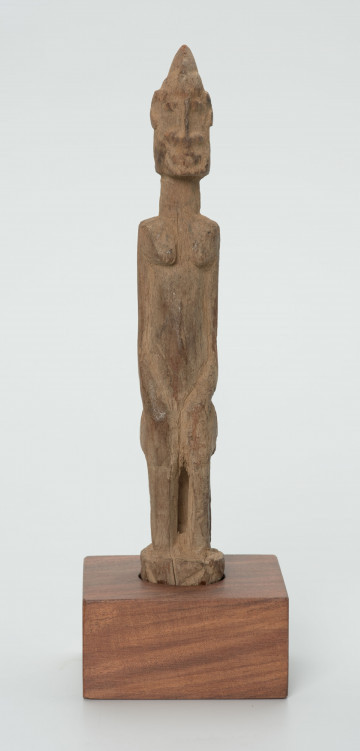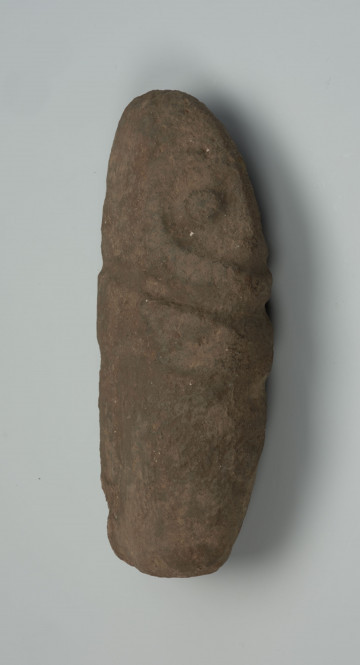
Figurine - ancestor
między 1901 — 1950
National Museum in Szczecin
Part of the collection: Collection of Dogonian art
Wooden figures popular in Dogon art are placed on altars that are numerous in the Bandiagara Escarpment. The Dogon altars are generally divided into two groups: communal and personal. Among the communal altars we can distinguish those which serve all the Dogon people as well as those which are dedicated only to a specific group. For example, different age classes, healers, blacksmiths and shepherds have their own altars. There are family altars (amayewe), family altars (wagem), district altars (babinu), village altars (lewe). There are even cases where a group of men, enjoying each other's company and spending time together drinking beer, decide to erect konyo ama, i.e. beer altar. Nowadays, omolo-ama is considered the strongest altar. It is a mound formed of clay, although sometimes a clay pot sitting on a branched stick can play its role. The Dogon believe that omolo-ama is strong because it has omolo-sem (life force). Blood sacrifices provide the most strength to the altars. In the oral tradition survived information about people once sacrificed, but it has not been practiced for a long time. An animal whose blood works just as well as human blood is the dog, but the last animal sacrifices remembered by modern Dogon were made during the Sigi festival, at the turn of the 1960s and 1970s. The blood of the dog was then used during the sacralization of imina na masks. If a blood sacrifice is required chickens are usually killed. The way the victim is killed is important. It must not happen at once; the animal must still be moving after falling on the altar. Every such movement is carefully observed and interpreted by competent people. In this way it is possible, for example, to find out at once whether the sacrifice has been accepted.
Ewa Prądzyńska
Author / creator
Dimensions
cały obiekt: height: 48 cm, width: 6,5 cm
Object type
figure
Creation time / dating
Creation / finding place
Identification number
Location / status

między 1901 — 1950
National Museum in Szczecin

między 1951 — 2000
National Museum in Szczecin

między 1951 — 2000
National Museum in Szczecin
DISCOVER this TOPIC
National Museum in Szczecin
DISCOVER this PATH
Educational path